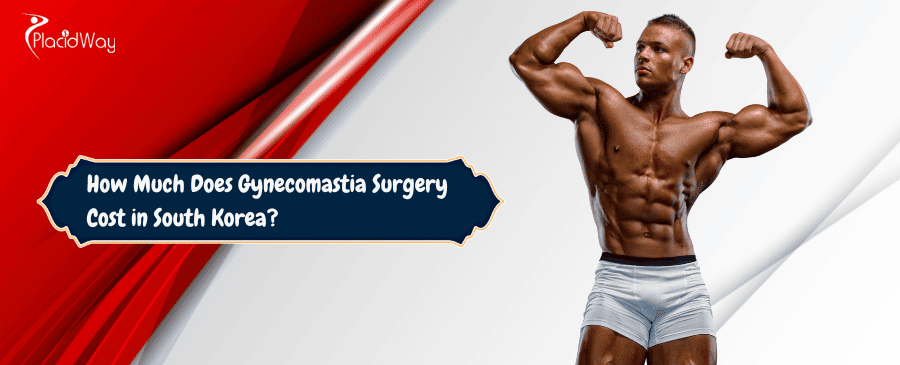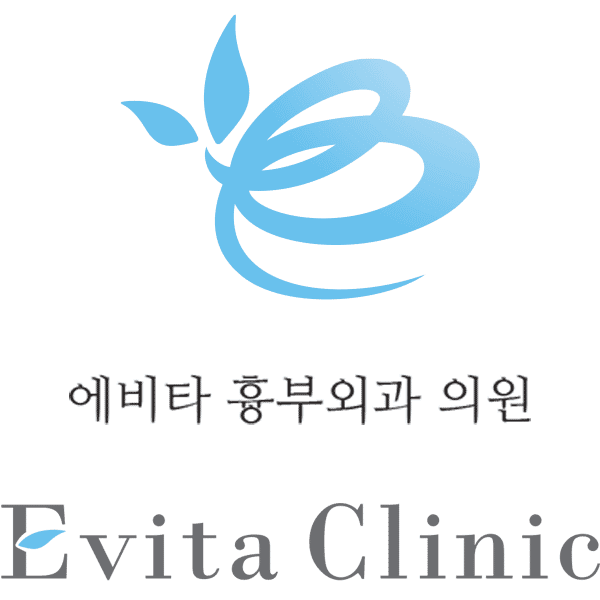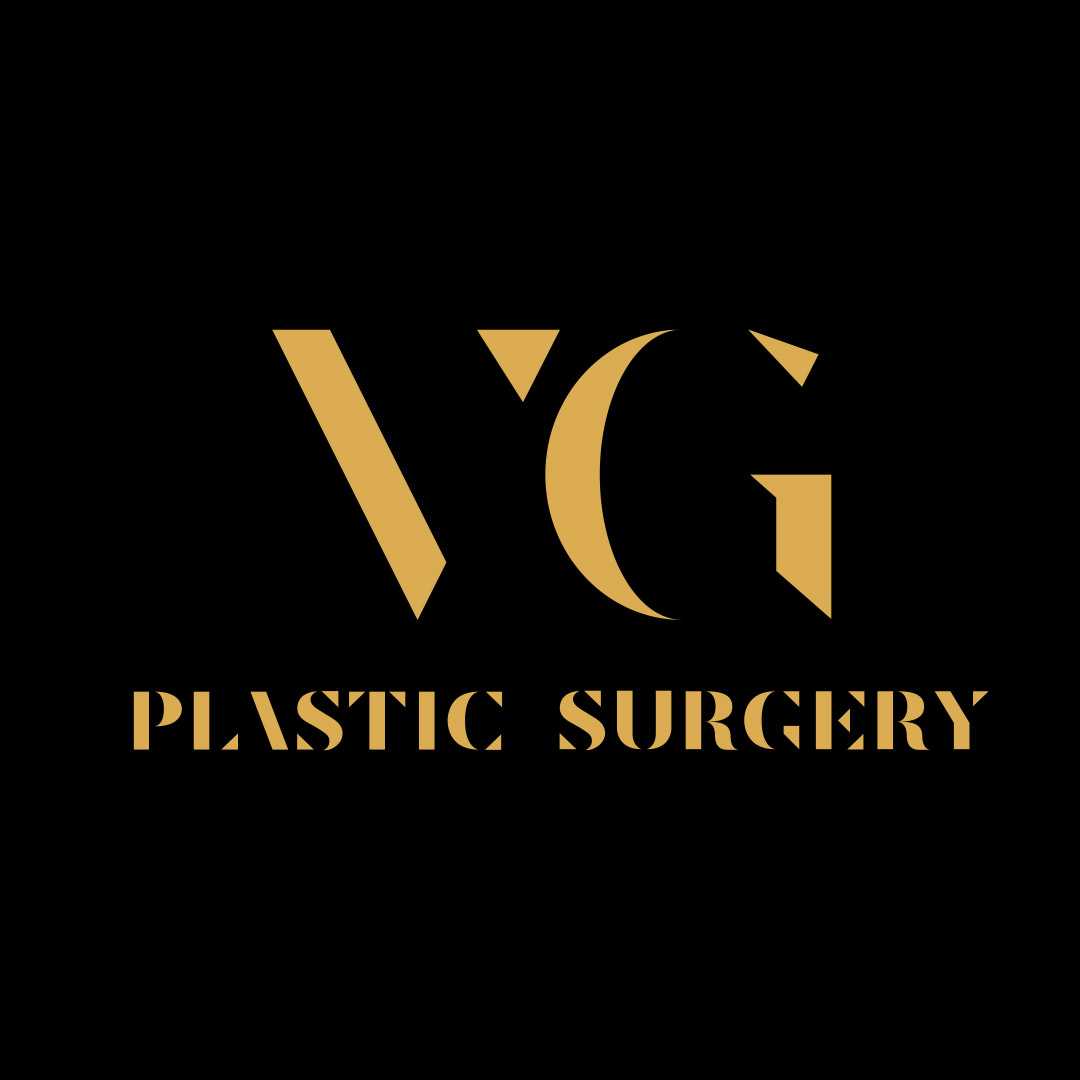Affordable Gynecomastia Surgery in South Korea

Gynecomastia, the enlargement of male breast tissue, is a common condition that can cause significant emotional and physical discomfort. For many, surgery is a highly effective solution, offering a flatter, more masculine chest contour. South Korea has emerged as a leading destination for cosmetic procedures, including gynecomastia surgery, attracting international patients due to its advanced medical technologies, highly skilled surgeons, and competitive pricing. If you're considering this procedure, understanding the costs involved and what to expect is crucial. This comprehensive guide will break down the expenses, factors influencing pricing, and other important aspects of undergoing gynecomastia surgery in South Korea.
How much does gynecomastia surgery cost in South Korea?
It's important to remember that this price typically covers the core surgical procedure. While many clinics offer packages that include certain aspects, always clarify what is encompassed in the quoted price to avoid unexpected costs.
What factors influence the cost of gynecomastia surgery?
-
Surgeon's Expertise and Reputation: Highly experienced and renowned plastic surgeons often charge more for their services. Their extensive training, successful track record, and specialized skills in male breast reduction can command a premium.
-
Surgical Technique Required: The method used to treat gynecomastia significantly impacts the cost.
-
Liposuction only: For cases primarily involving excess fatty tissue (lipomastia), liposuction might be sufficient and generally less expensive.
-
Glandular excision: If significant glandular tissue needs to be removed, a surgical excision is performed, which can be more involved and therefore cost more.
-
Combination of liposuction and excision: Most cases require a combination of both techniques, which will fall in the mid-range of pricing.
-
Skin removal (mastopexy) and nipple repositioning: For severe cases with significant skin laxity or nipple drooping, additional procedures like mastopexy (breast lift) or nipple transposition may be necessary, increasing the complexity and cost considerably.
-
-
Severity of Gynecomastia: The degree of breast enlargement plays a crucial role. Mild cases require less extensive intervention than severe cases, which might involve more comprehensive tissue removal and potentially skin tightening.
-
Clinic Location and Reputation: Clinics located in prime areas like Gangnam in Seoul, known for their state-of-the-art facilities and high patient volume, might have higher overheads, leading to slightly higher prices. Highly reputed clinics with international accreditations may also charge more due to their established quality standards.
-
Inclusions in the Treatment Package: Some clinics offer all-inclusive packages that cover everything from initial consultation to post-operative care, while others list each service separately. Always confirm what exactly is included.
What is typically included in the cost of gynecomastia surgery in South Korea?
-
Surgeon's Fee: This is the primary cost, covering the surgeon's expertise, time, and the execution of the surgical procedure.
-
Anesthesia Fee: The cost of the anesthesiologist and the anesthesia itself (local, sedation, or general anesthesia, depending on the complexity and patient preference).
-
Facility Fee: This covers the use of the operating room, equipment, and other clinic facilities.
-
Post-Operative Garment: A compression garment is usually required after surgery to help with swelling and promote proper healing, and its cost is often included.
-
Initial Follow-up Appointments: Many clinics include a few post-operative check-ups to monitor your recovery and address any immediate concerns.
However, it’s vital to confirm what is not included, such as:
-
Pre-operative tests (blood work, EKG, etc.) if not performed at the clinic.
-
Medications (painkillers, antibiotics) prescribed after the surgery.
-
Additional treatments like lymphatic massage or specialized scar care, which might be recommended for optimal results.
-
Accommodation and travel expenses if you are an international patient.
Is gynecomastia surgery covered by Korean National Health Insurance?
If you qualify for insurance coverage, the out-of-pocket cost is substantially reduced, potentially bringing the total down to around ?1.8 million KRW (approximately $1,300 USD). This typically includes consultation, surgery, anesthesia, and necessary follow-up care. Additionally, post-operative medications like antibiotics and pain relievers may also be covered. For international patients, this type of insurance coverage generally does not apply, and they will typically pay the full self-pay rate.
How does the cost of gynecomastia surgery in South Korea compare to other countries?
-
United States: The cost in the USA can range from $4,000 to $10,000 or more, making South Korea significantly more affordable.
-
United Kingdom: Similar to the USA, costs in the UK are typically much higher, often ranging from £3,000 to £6,000 ($3,800 - $7,600+ USD).
-
Turkey: Turkey is also a popular destination for medical tourism due to its lower costs. Gynecomastia surgery in Turkey might range from $2,750 to $5,000, putting it in a similar bracket to South Korea, or sometimes slightly less.
-
Thailand: Thailand offers highly competitive prices, with gynecomastia surgery potentially starting from $2,400 to $5,500. While potentially cheaper, South Korea often boasts a higher reputation for advanced techniques and specialized clinics.
-
India: India can offer some of the lowest prices, with costs ranging from $2,500 to $3,500.
Overall, South Korea often presents a compelling option, providing world-class medical facilities and highly skilled surgeons at a fraction of the cost found in many Western nations, without significantly compromising on quality, and often offering more advanced techniques.
What types of gynecomastia are there, and how do they affect the surgery?
-
Grade I (Mild Gynecomastia):
-
Description: Slight enlargement of the breast mound, typically with excess glandular tissue concentrated around the areola, and no excess skin.
-
Surgical Approach: Often managed with direct glandular excision through a small incision around the areola, sometimes combined with minimal liposuction for contouring.
-
Cost Impact: Generally the least expensive as it requires less extensive intervention.
-
-
Grade II (Moderate Gynecomastia):
-
Description: Moderate breast enlargement, with or without excess skin. The breast tissue extends beyond the areola margins.
-
Surgical Approach: Usually involves a combination of liposuction to remove fatty tissue and glandular excision to remove solid breast tissue. If there's mild skin laxity, careful contouring might suffice without significant skin removal.
-
Cost Impact: Mid-range in terms of cost, as it involves both liposuction and excision.
-
-
Grade III (Moderate to Severe Gynecomastia):
-
Description: Marked breast enlargement with noticeable skin excess and some sagging of the breast and nipple.
-
Surgical Approach: Requires extensive liposuction and glandular excision. Additionally, some skin removal (mastopexy) may be necessary to tighten the chest contour and prevent sagging. The incision pattern might be more extensive.
-
Cost Impact: Higher in cost due to the added complexity of skin removal and potentially longer surgical time.
-
-
Grade IV (Severe Gynecomastia):
-
Description: Pronounced breast enlargement with significant skin excess, often resembling female breasts, and marked nipple/areola drooping.
-
Surgical Approach: This is the most complex. It involves extensive liposuction, glandular excision, and significant skin removal, often requiring nipple repositioning (free nipple graft or pedicle technique). The incision may be more noticeable, resembling a breast reduction for women.
-
Cost Impact: The most expensive due to the comprehensive nature of the surgery, extended operating time, and greater post-operative care needs.
-
What are the surgical techniques used for gynecomastia in South Korea?
-
Liposuction:
-
Purpose: Primarily used for cases where the enlargement is due to excess fatty tissue (lipomastia) or when combined with glandular excision to contour the chest.
-
Method: Small incisions are made, and a cannula is inserted to suction out excess fat. Techniques like VASER liposuction (ultrasound-assisted) or laser lipolysis may be used to help break down fat cells for easier removal and skin tightening.
-
Benefits: Minimally invasive, smaller scars, and quicker recovery for suitable candidates.
-
-
Glandular Excision (Mastectomy):
-
Purpose: Necessary when the enlargement is caused by excess glandular breast tissue.
-
Method: An incision is typically made along the edge of the areola (periareolar incision), allowing the surgeon to directly remove the firm, fibrous glandular tissue.
-
Benefits: Effectively removes firm tissue that cannot be suctioned, providing a flat and firm chest.
-
-
Combination of Liposuction and Excision:
-
Purpose: Most common approach as gynecomastia often involves both fat and glandular tissue.
-
Method: Liposuction is performed first to remove fatty tissue and shape the chest, followed by glandular excision through a periareolar incision for precise removal of the underlying firm tissue.
-
Benefits: Comprehensive solution addressing both components of gynecomastia, leading to a more natural and well-contoured chest.
-
-
Skin Excision (Mastopexy/Nipple Transposition):
-
Purpose: For severe gynecomastia cases with significant excess skin and nipple drooping.
-
Method: This involves more extensive incisions to remove excess skin and reposition the nipple and areola for a more aesthetic appearance. Techniques can range from circumareolar excision (donut mastopexy) for mild skin excess to an inverted-T or anchor incision for severe cases.
-
Benefits: Addresses skin laxity and nipple position, crucial for a truly masculine chest contour in advanced cases.
-
Korean clinics also emphasize techniques that minimize visible scarring, such as using refined incision techniques and innovative post-operative care to promote healing. Some clinics promote "5D sculpting" or similar terms, which generally refer to a comprehensive approach combining liposuction, glandular removal, and advanced contouring to achieve optimal results from multiple angles.
What should I expect during the gynecomastia surgery consultation in South Korea?
-
Medical History Review: The surgeon will ask about your general health, past medical conditions, current medications (including supplements), and any allergies. It's important to be honest and comprehensive.
-
Physical Examination: A physical examination of your chest will be performed to assess the amount of glandular tissue, fat, and skin laxity. The surgeon will also determine the grade of your gynecomastia.
-
Discussion of Goals and Expectations: This is your opportunity to clearly articulate your desired outcome. The surgeon will discuss what is realistically achievable and help you form realistic expectations.
-
Surgical Plan Discussion: Based on the examination and your goals, the surgeon will recommend the most suitable surgical technique (liposuction, excision, or a combination) and explain why that particular approach is best for you. They will also discuss incision placement and expected scarring.
-
Pre-operative Tests: You may be asked to undergo blood tests, an electrocardiogram (ECG), or other diagnostic tests to ensure you are a suitable candidate for surgery.
-
Risks and Complications: The surgeon will thoroughly explain the potential risks and complications associated with gynecomastia surgery, such as bleeding, infection, asymmetry, changes in nipple sensation, and scarring.
-
Cost and Inclusions: A detailed breakdown of the cost will be provided, outlining what is included in the price and any potential additional expenses.
-
Recovery Process: You'll receive information about the recovery period, including what to expect immediately after surgery, care instructions, activity restrictions, and the timeline for seeing final results.
-
Questions and Concerns: This is the time to ask any questions you have. Don't hesitate to clarify anything you don't understand. Many clinics catering to international patients will have English-speaking staff or dedicated translators to facilitate clear communication.
What is the recovery time for gynecomastia surgery?
-
Immediately After Surgery (Day 1-3):
-
You will likely feel some soreness, bruising, and swelling in the chest area.
-
A compression garment will be placed on your chest immediately after surgery to help reduce swelling and support the healing tissues. This garment is crucial and typically worn continuously for several weeks.
-
Drains might be inserted to collect excess fluid, usually removed within a few days.
-
Pain medication will be prescribed to manage discomfort.
-
Light walking is encouraged to promote circulation.
-
-
First Week (Days 4-7):
-
Pain and discomfort should gradually subside.
-
Most sutures (if external) or drains (if used) are typically removed during a follow-up visit.
-
You should avoid strenuous activities, heavy lifting, and any movements that strain the chest muscles.
-
Most people can return to light, non-physical work or daily activities.
-
-
Weeks 2-4:
-
Significant swelling and bruising will start to diminish, but some residual swelling may persist.
-
The compression garment continues to be worn, often for 3-6 weeks in total, as advised by your surgeon.
-
Light exercise, such as brisk walking, can usually be resumed.
-
Avoid direct sun exposure on incisions.
-
-
Weeks 6-12:
-
You can gradually resume more strenuous activities, including most forms of exercise.
-
The final contours of the chest will begin to emerge as swelling continues to resolve.
-
Scarring will start to fade but will still be noticeable.
-
-
Months 3-6 and Beyond:
-
Swelling should be almost completely gone, revealing the final results of the surgery.
-
Scars will continue to mature and fade, potentially taking up to a year or more to flatten and lighten.
-
Maintaining a stable weight and healthy lifestyle is important to preserve the results.
-
Your surgeon will provide specific post-operative instructions tailored to your individual case, and adhering to these guidelines is crucial for optimal healing and results.
Are there any non-surgical treatments for gynecomastia?
-
Diet and Exercise:
-
Effectiveness: If the breast enlargement is primarily due to excess fat (lipomastia) and not glandular tissue, weight loss through a healthy diet and regular exercise can significantly reduce the chest size.
-
Limitations: This approach is generally ineffective for true gynecomastia, as glandular tissue does not respond to diet or exercise.
-
-
Hormonal Treatments:
-
Effectiveness: In some cases, gynecomastia is caused by a hormonal imbalance (e.g., elevated estrogen or low testosterone). Medications that block estrogen's effects (like tamoxifen or raloxifene) or increase testosterone levels may be prescribed.
-
Limitations: These treatments are typically reserved for newly developed gynecomastia in adolescents or when an underlying hormonal issue is identified. They are less effective for long-standing or severe cases, and their use requires careful medical supervision due to potential side effects.
-
-
Medication Adjustments:
-
Effectiveness: Certain medications can cause gynecomastia as a side effect (e.g., some antidepressants, heart medications, anti-androgens). If a medication is identified as the cause, discontinuing or changing it under medical guidance may help reduce breast size.
-
Limitations: This is only applicable if medication is the root cause and the glandular tissue hasn't become too established.
-
-
Compression Garments:
-
Effectiveness: While not a treatment, wearing a compression vest can temporarily flatten the chest and improve appearance, offering a discreet solution for some men.
-
Limitations: This is a temporary measure and does not address the underlying issue or reduce the breast tissue itself.
-
It's crucial to consult with a medical professional to determine the exact cause of your breast enlargement and the most appropriate course of action. For true glandular gynecomastia, surgical removal remains the gold standard for long-term, definitive results.
What are the potential risks and complications of gynecomastia surgery?
-
Bruising and Swelling: These are very common after surgery and gradually subside over several weeks.
-
Pain and Discomfort: Mild to moderate pain is expected and can be managed with prescribed medication.
-
Infection: Although rare, infection at the incision site is a possibility. Antibiotics are often prescribed to prevent this.
-
Hematoma: Accumulation of blood under the skin, which may require drainage.
-
Seroma: Accumulation of clear fluid under the skin, which may also require drainage.
-
Asymmetry: While surgeons strive for symmetry, slight differences between the two sides of the chest can occur.
-
Changes in Nipple Sensation: Temporary or, in rare cases, permanent changes in nipple and areola sensation (increased sensitivity, decreased sensitivity, or numbness) can occur.
-
Scarring: All surgery involves scarring. While surgeons aim to make incisions discreet (often around the areola), scars are permanent. Their appearance improves over time, but their visibility varies.
-
Unfavorable Cosmetic Outcome: Despite the surgeon's best efforts, the aesthetic result may not fully meet expectations. This can include contour irregularities or residual breast tissue.
-
Skin Discoloration: Pigmentation changes in the treated area can occur, though usually temporary.
-
Nipple Necrosis (Rare): In very rare instances, particularly with significant nipple repositioning, the blood supply to the nipple can be compromised, leading to tissue death.
-
Anesthesia Risks: Risks associated with anesthesia include allergic reactions, respiratory problems, or adverse drug interactions.
Choosing a qualified and experienced plastic surgeon significantly minimizes these risks. During your consultation, your surgeon will discuss these potential complications in detail and answer any questions you may have.
How long do the results of gynecomastia surgery last?
However, it's important to understand a few key points regarding maintaining these results:
-
Weight Stability: While glandular tissue removal is permanent, significant weight gain after surgery can lead to a recurrence of chest fat (lipomastia). This is not a return of gynecomastia itself but rather new fatty deposits that can alter the chest's appearance. Maintaining a healthy and stable weight through diet and exercise is crucial for preserving the surgical outcome.
-
Hormonal Changes: In rare cases, extreme hormonal imbalances (e.g., from certain medications, substance abuse, or specific medical conditions) could theoretically cause new glandular growth. However, this is uncommon, especially if the underlying cause was identified and addressed prior to surgery.
-
Adherence to Post-Operative Care: Following all post-operative instructions, including wearing the compression garment and avoiding strenuous activities during recovery, helps ensure optimal healing and contributes to the longevity of your results.
In essence, gynecomastia surgery offers a definitive solution for excess glandular tissue, providing enduring results that can significantly boost confidence and improve body contour for years to come.
What is the average age for gynecomastia surgery?
-
Infancy: Transient gynecomastia is common in newborns due to maternal hormones, usually resolving within a few weeks. Surgery is never performed at this stage.
-
Adolescence (Pubertal Gynecomastia): This is very common during puberty (ages 12-18) due to fluctuating hormone levels. In many cases, it resolves naturally within 1-2 years. Surgeons often recommend waiting until late adolescence (typically after age 18 and sometimes into the early twenties) before considering surgery, as there's a good chance it will resolve on its own. Waiting also ensures that the breast tissue has fully developed and stabilized.
-
Older Adulthood: As men age, hormonal changes, certain medications, or underlying health conditions can lead to gynecomastia. Surgery in this age group is also common.
Therefore, while gynecomastia surgery can be performed on adults of any age, a significant portion of patients are young men in their late teens or early twenties who have persistent pubertal gynecomastia. Many older men also seek the procedure to address the condition that may have developed later in life.
Will gynecomastia surgery leave noticeable scars?
Here's what to expect regarding scarring:
-
Periareolar Incision: For most cases involving glandular excision (with or without liposuction), the incision is made along the lower half of the edge of the areola (the pigmented area around the nipple). This location is highly advantageous because:
-
The natural color transition between the areola and the surrounding skin helps to camouflage the scar.
-
The irregular texture of the areola itself can also make the scar less noticeable.
-
These scars generally heal very well and fade significantly over time, becoming thin, fine lines that are often difficult to detect.
-
-
Liposuction Incisions: If liposuction is used alone or in combination, very small incisions (a few millimeters long) are made, often in discreet locations like the armpit or along the side of the chest. These small scars are usually barely visible once healed.
-
More Extensive Incisions: In severe cases of gynecomastia (Grade III or IV) where significant skin removal is necessary, the incisions will be more extensive. These might include:
-
A "donut" incision around the entire areola for moderate skin laxity.
-
An inverted-T or anchor-shaped incision (similar to a female breast reduction) for very significant skin excess and nipple repositioning.
-
These more extensive incisions will result in more noticeable scars, but even then, skilled surgeons aim to place them strategically and use techniques to promote optimal healing and minimize their appearance.
-
Ultimately, while scars are an unavoidable part of gynecomastia surgery, they are generally well-concealed and designed to be as inconspicuous as possible. Proper post-operative care, including scar massage and protection from sun exposure, can further aid in their fading process.
What is the difference between gynecomastia and pseudogynecomastia (lipomastia)?
-
Gynecomastia (True Gynecomastia):
-
What it is: This refers to the actual enlargement of the male breast gland (glandular tissue). It's caused by an imbalance of hormones, typically an increase in estrogen relative to testosterone, or by certain medications, health conditions, or genetics. The glandular tissue feels firm and rubbery, often concentrated behind the nipple and areola.
-
Diagnosis: A physical examination will reveal the presence of palpable, firm glandular tissue. Imaging like ultrasound or mammography can confirm the presence of glandular tissue and differentiate it from fat.
-
Treatment: Surgical excision is the only definitive way to remove true glandular tissue. Liposuction alone is generally ineffective for glandular gynecomastia.
-
-
Pseudogynecomastia (Lipomastia):
-
What it is: This refers to breast enlargement that is primarily due to excess fatty tissue in the chest area, without significant glandular development. It is commonly associated with general obesity. The chest tissue feels soft and fatty, similar to other areas of fat accumulation on the body.
-
Diagnosis: A physical examination will primarily identify fatty tissue. The "pinch test" (pinching the tissue between your thumb and forefinger) will reveal soft, compressible fat rather than firm glandular tissue.
-
Treatment: Lipomastia can often be addressed through diet and exercise, leading to overall weight loss. If localized fat remains despite weight loss, liposuction is an effective surgical solution, as it targets and removes fatty tissue.
-
Key Difference and Impact on Treatment:
The fundamental difference lies in the composition of the enlarged breast. Gynecomastia involves glandular tissue, which requires surgical removal. Pseudogynecomastia involves fat, which can respond to weight loss or be removed via liposuction. Many men have a combination of both, which is why a combined approach of liposuction and glandular excision is frequently used in gynecomastia surgery. A proper diagnosis by a qualified medical professional is essential to determine the correct condition and appropriate treatment plan.
What kind of anesthesia is used for gynecomastia surgery in South Korea?
-
General Anesthesia:
-
Description: With general anesthesia, you will be completely unconscious and feel no pain during the entire procedure. An anesthesiologist will administer medications intravenously and/or through inhalation to put you to sleep and monitor your vital signs throughout the surgery.
-
When it's used: This is often preferred for more extensive gynecomastia cases involving significant glandular excision, extensive liposuction, or when skin removal is necessary, as it allows the surgeon to work without interruption and the patient to be completely relaxed.
-
Benefits: Complete pain relief, no memory of the procedure, and full relaxation.
-
-
Local Anesthesia with Sedation (Twilight Sedation):
-
Description: This involves injecting a local anesthetic into the chest area to numb it, combined with intravenous (IV) sedation to help you relax deeply, making you drowsy and comfortable. You will be conscious but in a "twilight" state, often with little to no memory of the surgery.
-
When it's used: This may be an option for less complex cases, such as those primarily involving liposuction or minor glandular excision.
-
Benefits: Faster recovery from anesthesia, avoids the deeper effects of general anesthesia, and some patients prefer to avoid being completely unconscious.
-
Some clinics might also offer just local anesthesia for very minor cases, but this is less common for full gynecomastia surgery. Reputable clinics in South Korea will have a board-certified anesthesiologist present to administer and monitor anesthesia for patient safety, regardless of the type chosen. Your surgeon and anesthesiologist will discuss the best option for you during your pre-operative consultation.
What should I look for in a gynecomastia surgeon in South Korea?
-
Board Certification and Qualifications:
-
Ensure the surgeon is a board-certified plastic surgeon in South Korea. This indicates they have undergone rigorous training and met high standards of expertise.
-
Look for memberships in reputable professional organizations, such as the Korean Society of Plastic and Reconstructive Surgeons (KSPRS).
-
-
Specialization and Experience in Gynecomastia:
-
While many plastic surgeons perform various procedures, ideally, you want a surgeon who has significant experience and a specific focus on male breast reduction.
-
Inquire about the number of gynecomastia surgeries they perform annually. High volume often indicates a deeper understanding of various cases and complications.
-
-
Before-and-After Photo Portfolio:
-
A strong portfolio of previous gynecomastia patients is crucial. Look for results that appear natural, symmetrical, and align with your aesthetic goals.
-
Pay attention to how different grades of gynecomastia were addressed and the quality of scar healing.
-
-
Patient Reviews and Testimonials:
-
Seek out reviews from previous patients, especially international ones, to get insights into their experience with the surgeon, clinic staff, communication, and overall outcome.
-
Websites like Google Reviews, WhatClinic, Bookimed, and specialized forums can be good sources.
-
-
Communication and Understanding:
-
During your consultation (virtual or in-person), assess how well the surgeon listens to your concerns and understands your aesthetic goals.
-
They should clearly explain the procedure, potential risks, and expected outcomes in a way you can understand, even if through a translator. Good communication ensures you're fully informed and comfortable.
-
-
Facility Accreditation and Safety:
-
While the surgeon is key, the clinic environment also matters. Ensure the clinic adheres to international safety standards and has proper accreditation. This means having a well-equipped operating room and qualified anesthesia providers.
-
By carefully evaluating these factors, you can significantly increase your chances of a successful and satisfying gynecomastia surgery experience in South Korea.
If you're considering gynecomastia surgery or other healthcare services, PlacidWay can help you explore reputable clinics and highly experienced surgeons in South Korea and worldwide. Contact us today to learn more about how we can assist you in finding the right solution for your medical needs.


.png)







.png)






Share this listing